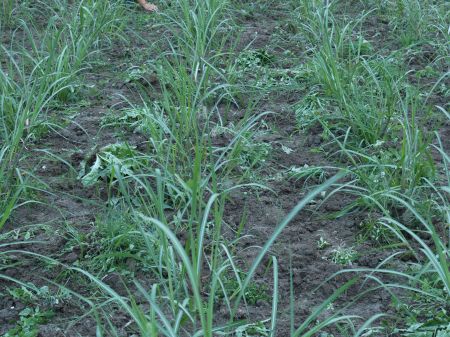In order to be able to provide information here, a first attempt is being made at the Institute for Organic Agriculture at the HBLFA Raumberg-Gumpenstein. Both the development during growth and the possible returns should be determined. In comparison, there will be a small experiment in the conventional area at the headquarters in Gumpenstein, in which chemical plant protection can also be used in the plant year.
This scientific activity is primarily about determining the suitability of Miscanthus for cultivation under unfavorable climatic conditions. Described as a plant of the corn climate with a maximum altitude of 700 m, an experiment is now to be carried out in exactly this borderline area. The middle Ennstal is one of the main production areas of the High Alps, with its arable land located between 650 and 700 m above sea level, has an average annual temperature of 6.9°C and an average annual precipitation of 1000 mm. Under such conditions, there are no experimental results as to what can be achieved with this scientific activity.
Especially from the perspective of an alternative culture, it is important to know whether and how Miscanthus is suitable for cultivation in the Alpine region. This scientific activity is about documenting the development of an optimal population, how the seedlings establish themselves in the year they were planted, how the population developed until the onset of winter, how the population appears after the first winter and whether it really is after the second winter the first harvest can be expected. Interest in energy crops has increased significantly worldwide, also due to the shortage and high prices of petroleum. A reversal trend towards renewable fuels is clearly visible and a plant like this is ideal. The countless possible uses, both material and energetic, make Miscanthus appear to be a true miracle plant. Relatively modest requirements, with the exception of the climate, little fertilization, and a persistent culture with a useful life of 20 years speak absolutely in favor of this plant. If you can then assume an output per hectare of around 15 to 25 t of dry matter, then nothing should actually stand in the way of growing Miscanthus. Data on the growth of Miscanthus, overwintering and yield are important as a basis for advice. But the business data should not be ignored either. Especially under unfavorable climatic conditions, it is even more important to be able to achieve an appropriate yield without too much financial outlay. Therefore, work records must be kept, all external services must be recorded and, above all, the productive output must be compared with all expenses. If such an alternative culture is viable even in unfavorable locations, it can mean an opportunity for individual farmers to improve their income.







